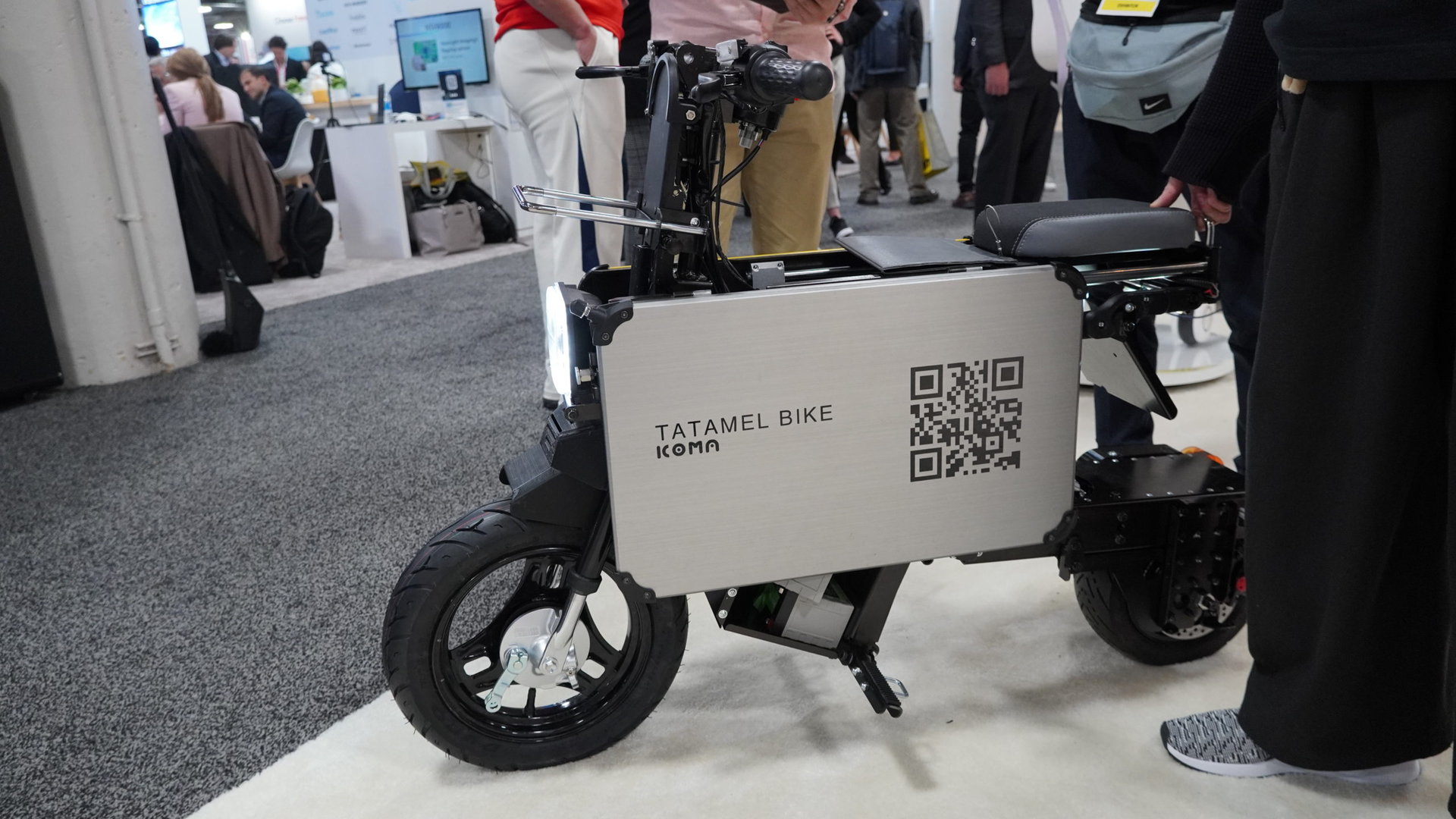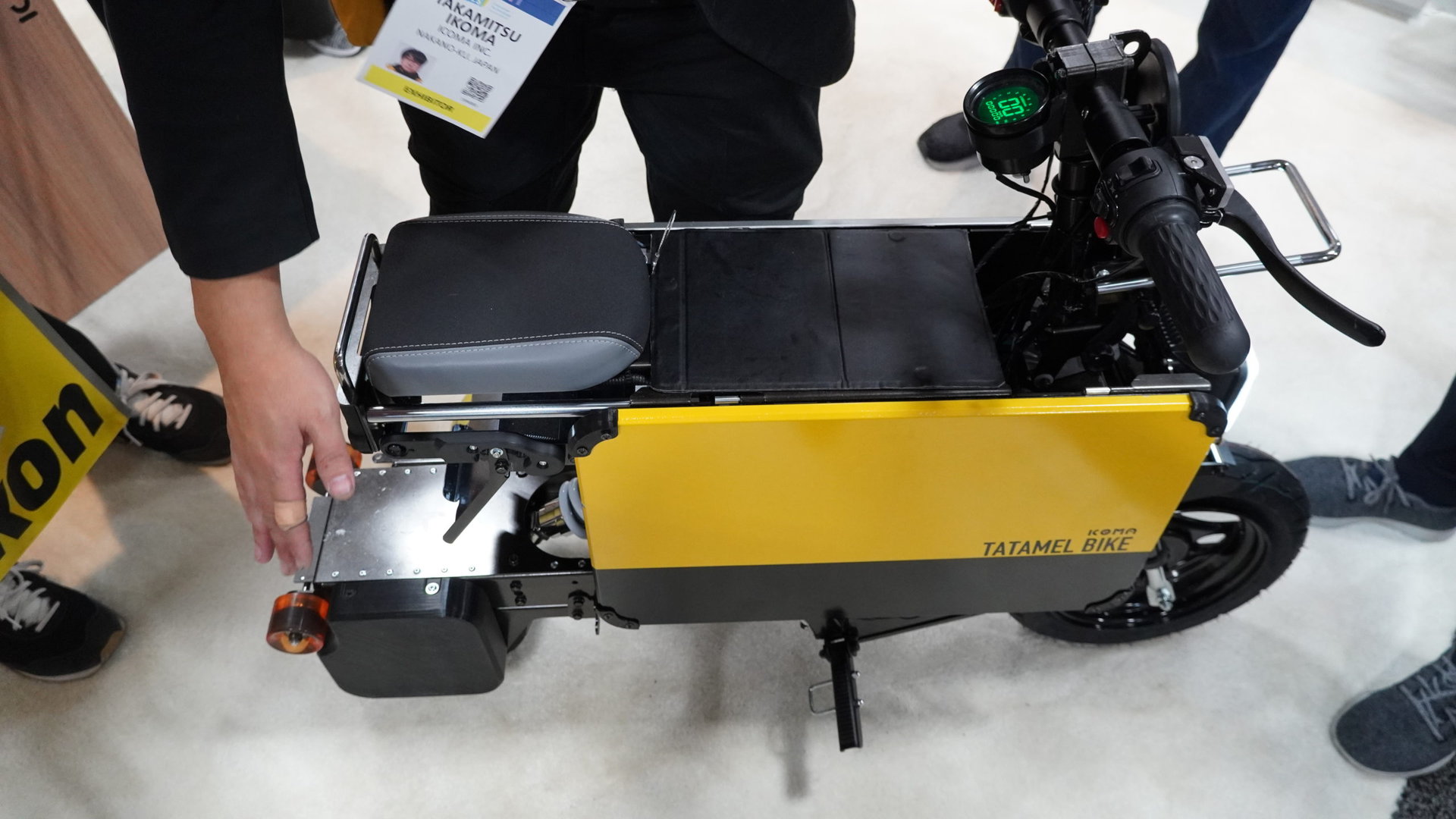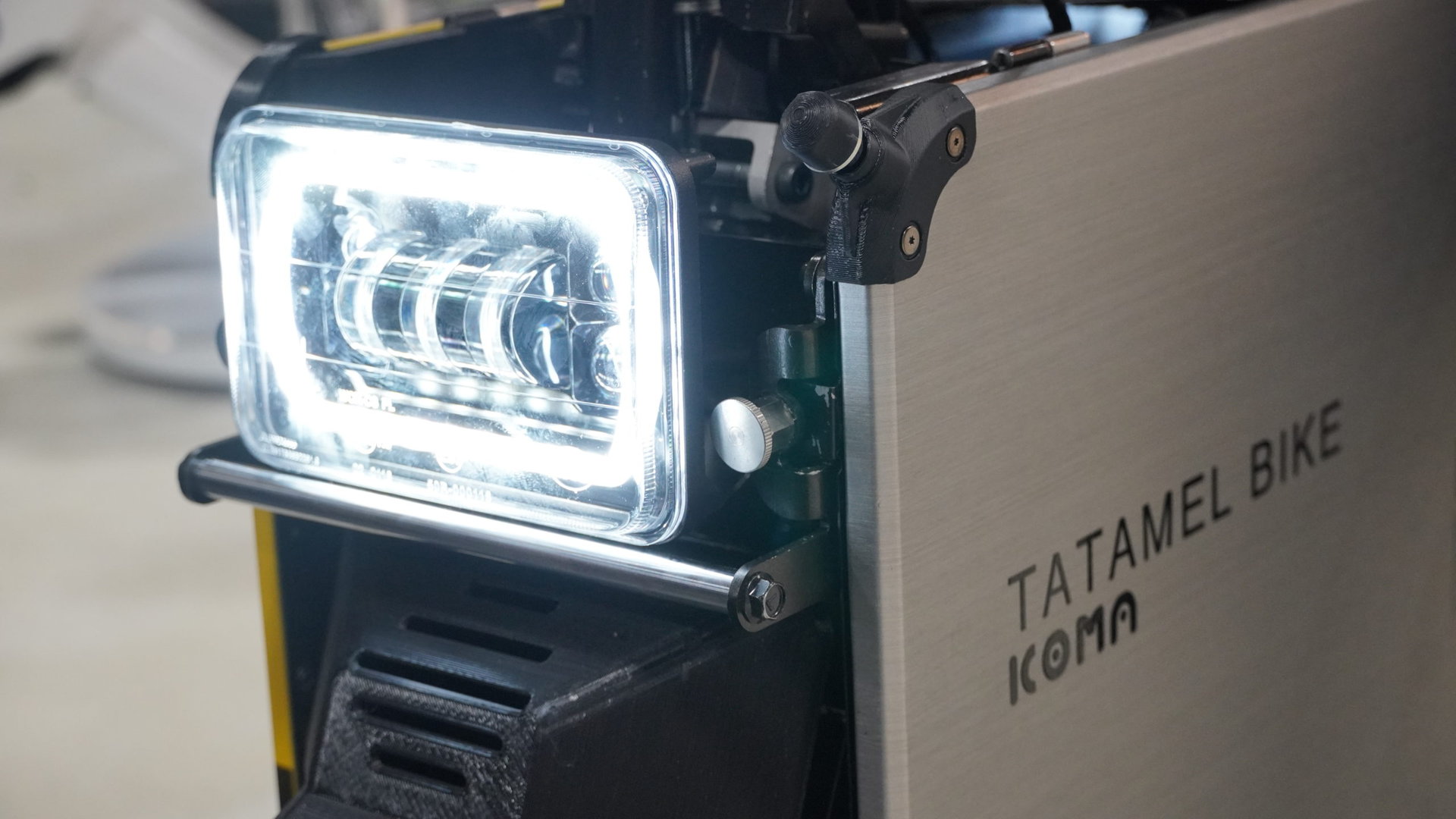Affiliate links on Android Authority may earn us a commission. Learn more.
Icoma Tatamel hands-on: A mini transformable e-bike
Published onJanuary 7, 2023
CES is the birthplace of exciting concepts and unorthodox gadgets. Not all of them actually make it to market, testing the limits of what is possible. But now and then, there’s something so simply innovative and charming you can’t help but want it to succeed. To me, one of the most emblematic products of that sentiment is the Icoma Tatamel e-bike; a fully customizable electric motorbike that folds up into the size of a briefcase.
Unfortunately, I didn’t get to take the bike for a test ride on the road. But what I could see and experience with it made me want to take it home with me in a second suitcase. The compact design and customizable features of the prototype I got my hands on presented exciting possibilities for the EV space of micro-mobility. Sure, there are some kinks to work out before the bike launches later this year, but for a first try at developing an original EV, Icoma has done more than enough to get my attention.
More than just a bike

I had the opportunity to speak with the co-founders of Icoma, who told me their professional background was designing Japanese transformable toys. Knowing that puts a lot about this bike into perspective. Like a transformer, the bike is playful and adaptive. I couldn’t help but smile seeing the wheels and headlight spring out of the little rectangle, and the multiple functions the bike can serve make it more than just a bike. It’s more akin to an electric multi-tool of sorts.
Like a transformer, the bike is adaptive and can serve multiple functions at once.
For starters, as a personal method of transportation, the Tatamel blurs the line between many types of electric vehicles. It has ten-inch tires with dual suspension and dual breaks. It also has a reasonable top speed of 40km/h with a range of 30km, which puts it somewhere between a moped and a scooter. And while it is smaller than your typical electric scooter, it weighs a lot more at 110lbs. Unfortunately, that weight does snuff out the convenience of portability. But to its credit, it is much easier to store than a folding scooter as it collapses into itself to fit under a desk.

But ultimately, the Tatamel is more than just a bike. Before my eyes, I saw the bike become a small desk table to write on and a TV to watch Netflix with. How is that possible? The side panels of the bike are fully customizable. One side panel was made out of wood and flipped open like an airplane wing with a long leg to stand on. The panel on the other side contained a screen capable of playing videos, mirroring your phone’s screen, or displaying digital signage.
I also saw a slew of concept art for what your panels could be. Everything from artificial grass to tiger skin to plush leather, it seems the possibilities are endless. But beyond just giving the panels a makeover, you can customize other parts too. The fenders, seats, and tires are all interchangeable. I got an exclusive look at the software Icoma uses to customize their bikes in real-time digitally, and it’s something the founders envision making available on their website in the future. That way, customers could create a unique bike according to their style to order.
Another function the Tatamel bike serves is as a power source. It can charge your phone or any supported device via USB-C, which is something very few micro-mobile electric vehicles I’ve seen are capable of, but I suspect this trend to become very popular in the near future because, well, it just makes sense. The Tatamel plugs into any wall outlet, and it will fully charge in under three hours. The battery can be expanded from 12Ah to ~29Ah, but that will also add to its already heavy weight.
Icoma envisions the Tatamel as a deployable power station, providing power with the use of solar panels.
Icoma really emphasized the idea that the Tatamel could act as a deployable power station in the future. In disasters or blackouts, someone could come to the rescue riding an energy source. They even mentioned implementing attachable solar panels to the side to help sustain the power delivery for longer periods of time and extend the range.

The Japanese startup is certainly dreaming big with what its bike can do, and the Tatamel manages to juggle it pretty well. Though sometimes it seems like the bike doesn’t really know what it wants to be in trying to be everything. The small size wants to be portable but can’t because it is so heavy. The front metal handlebar and caster help to drag it around like a suitcase, but it’s not a long-term solution.
Given the weight, the Tatamel may as well be bigger in size to accommodate more. But the modular possibilities paint a bright future.
Plus, when unfolded, the bike provides some internal empty space to fit things like a water bottle, but it’s too tight to store a helmet. Compromises like this may benefit certain regions, such as Japan, where storage space is an issue, but I think a larger model would be better suited for other parts of the world. That being said, the Icoma Tatamel is still under development, and a lot could change before it finally gets released. I hope to see more battery and motor options for higher speeds and range. But the modular possibilities paint a bright picture.
Up next: I rode an electric bike to work, and here’s what I learned